As generative AI technologies continue to transform the research landscape, major academic publishers are beginning to integrate AI-powered tools directly into their platforms. These tools aim to support researchers at various stages of the scientific workflow – from literature discovery and summarisation to writing assistance and experimental comparison. This article provides an overview of how the three largest scientific publishers – Elsevier, Springer Nature and Wiley – are approaching generative AI, highlighting the distinct strategies and functionalities behind each solution.
Elsevier: Scopus AI and ScienceDirect AI
Elsevier has taken a leading role among academic publishers in integrating generative AI into the research process, offering two distinct tools: Scopus AI and ScienceDirect AI.
Scopus AI, launched in early 2024, is a generative AI-powered research assistant built on Elsevier’s vast Scopus database. Its goal is to help researchers navigate academic literature more efficiently by offering digestible summaries, interactive concept maps, and guided exploration features. Users can input queries in natural language – including multiple languages – and receive both concise topic summaries and extended explanations based on the abstracts of relevant documents. A notable feature is the RAG Fusion technology, which enhances answer quality by combining retrieval-augmented generation with Scopus’ structured metadata.
RAG Fusion technology
RAG Fusion, a patent-pending enhancement of Retrieval-Augmented Generation, powers Scopus AI’s generative capabilities. This technique creates multiple versions of a user query—including follow-up questions—then performs broad, parallel searches across the Scopus database. The results are intelligently merged and ranked using Reciprocal Rank Fusion (RRF), allowing Scopus AI to generate comprehensive, trustworthy responses that reflect multiple angles while staying focused on the researcher’s original intent.
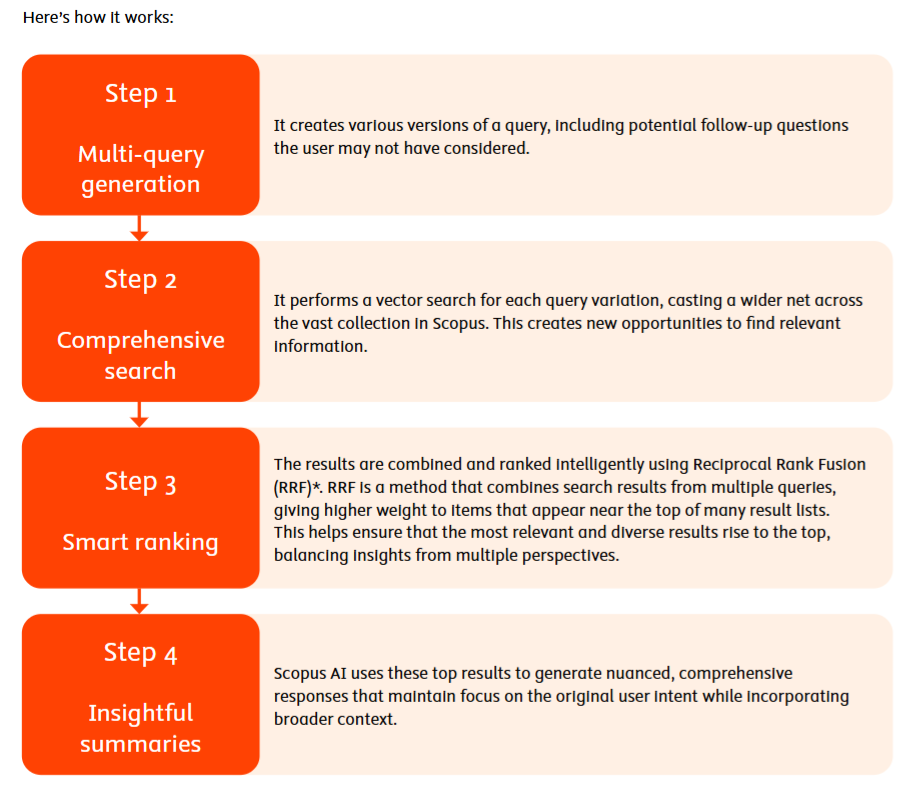
The ScopusAI platform offers unique tools such as:
(1) Emerging Themes, which help researchers identify rising or novel research directions. For each theme it detects, Scopus AI generates a mini descriptive summary, suggested hypotheses for further investigation, and referenced documents to support the claims.

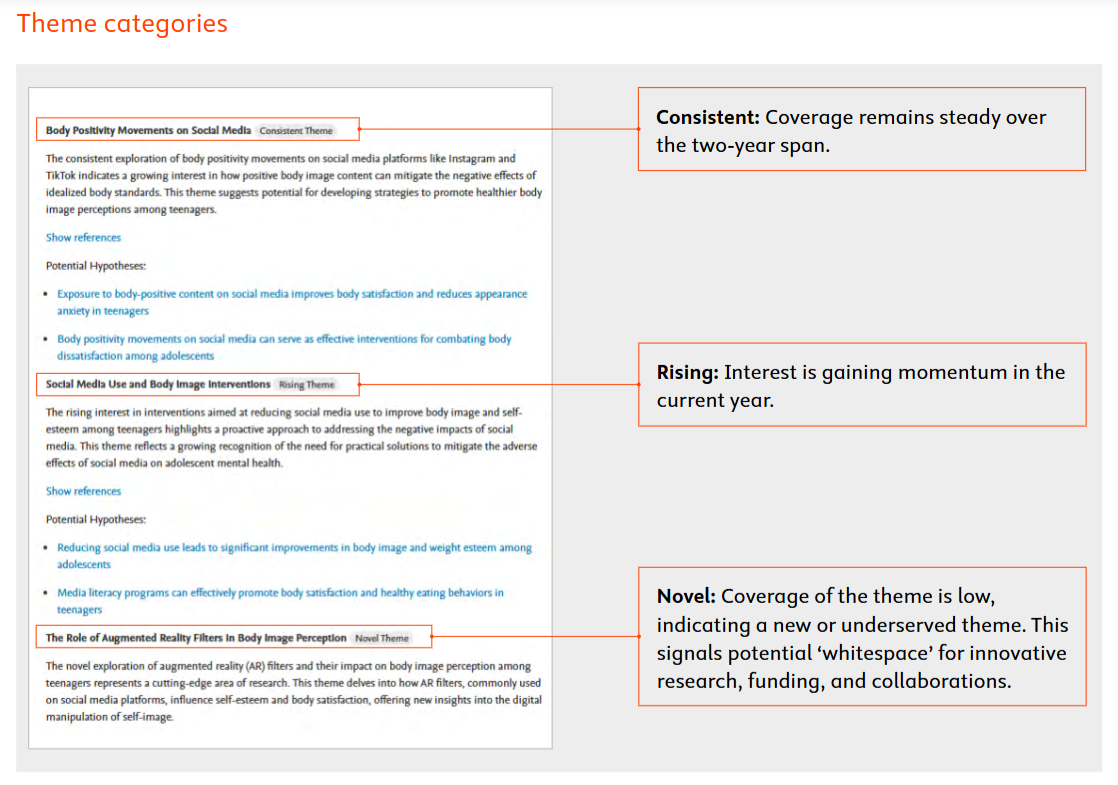
(2) Concept Maps, which visually map out topic relationships and reveal cross-disciplinary links. Scopus AI builds an interactive concept map for each query using keywords extracted from abstracts. These maps help researchers gain a bird’s-eye view of the research landscape and identify how their topic connects to others. It is especially useful for discovering interdisciplinary angles or unfamiliar research paths.
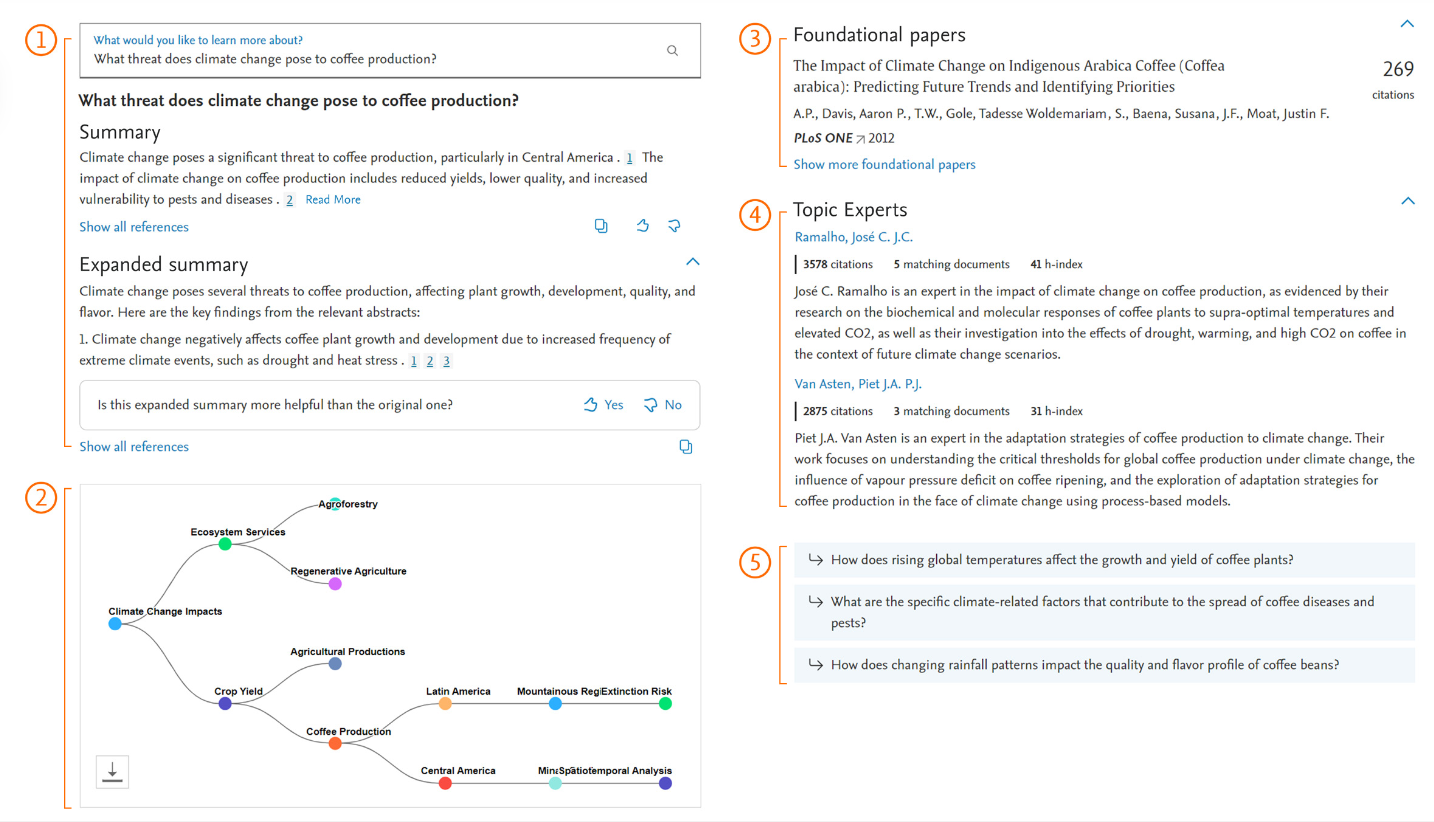
(3) Foundational Papers trace key sources cited by summarised articles. To deepen topic exploration, Scopus AI identifies high-impact papers most frequently cited within the cluster of documents related to a given topic. These foundational papers serve as anchor points for further reading and help researchers quickly access influential work in the field.

In March 2025, Elsevier expanded its offering with ScienceDirect AI, a tool focused on full-text analysis of Elsevier’s journal and book content. While Scopus AI offers a broad, abstract-level overview of the global research landscape, ScienceDirect AI functions more like a microscope: it enables researchers to explore and compare detailed insights extracted directly from the full text of over 14 million peer-reviewed articles and book chapters.
Unlike Scopus AI, which summarises content at the metadata and abstract levels, ScienceDirect AI grounds its responses in specific passages. It provides not only full-text summaries but also traceable citations with links to the exact source text, ensuring reproducibility, transparency, and academic integrity.
Key features include:
(1) Ask ScienceDirect AI, which enables natural language querying across full-text documents, producing referenced summaries and related insights.
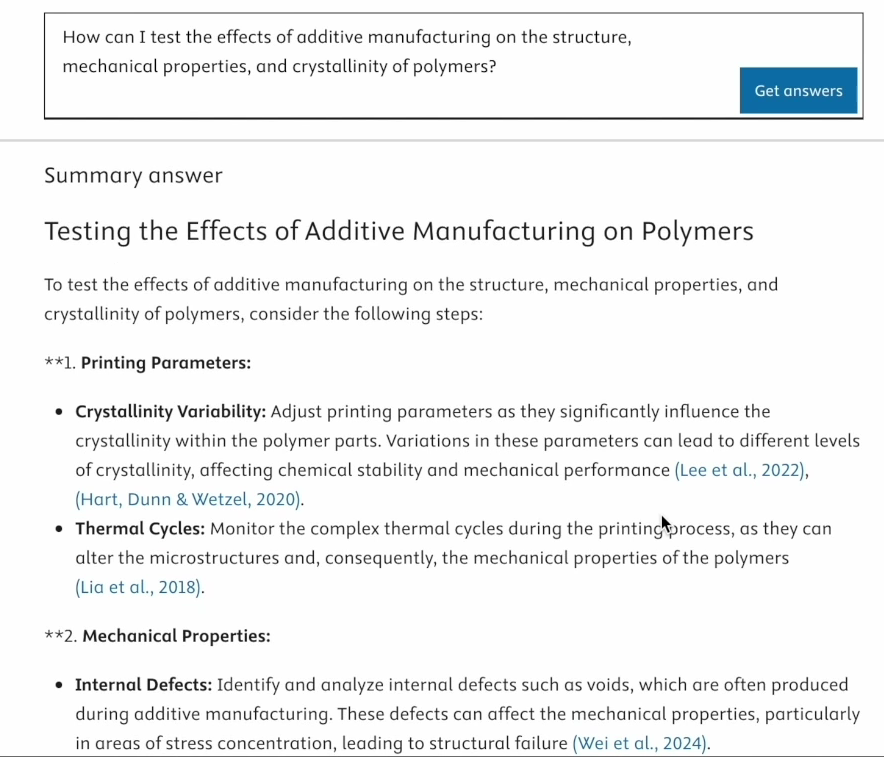
(2) Reading Assistant, a conversational sidebar that lets users interact with specific documents, ask follow-up questions, summarise sections, and jump directly to source excerpts.

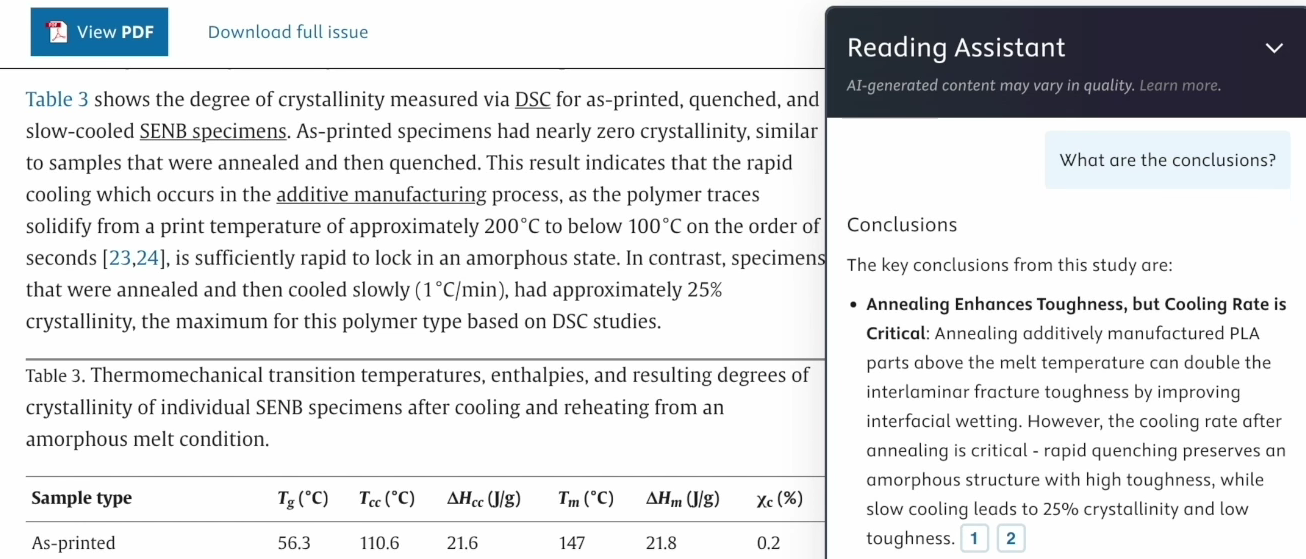
(3) Compare Experiments, a unique tool that extracts and tabulates experimental details (e.g. goals, methods, results) across multiple papers, streamlining comparative analysis.
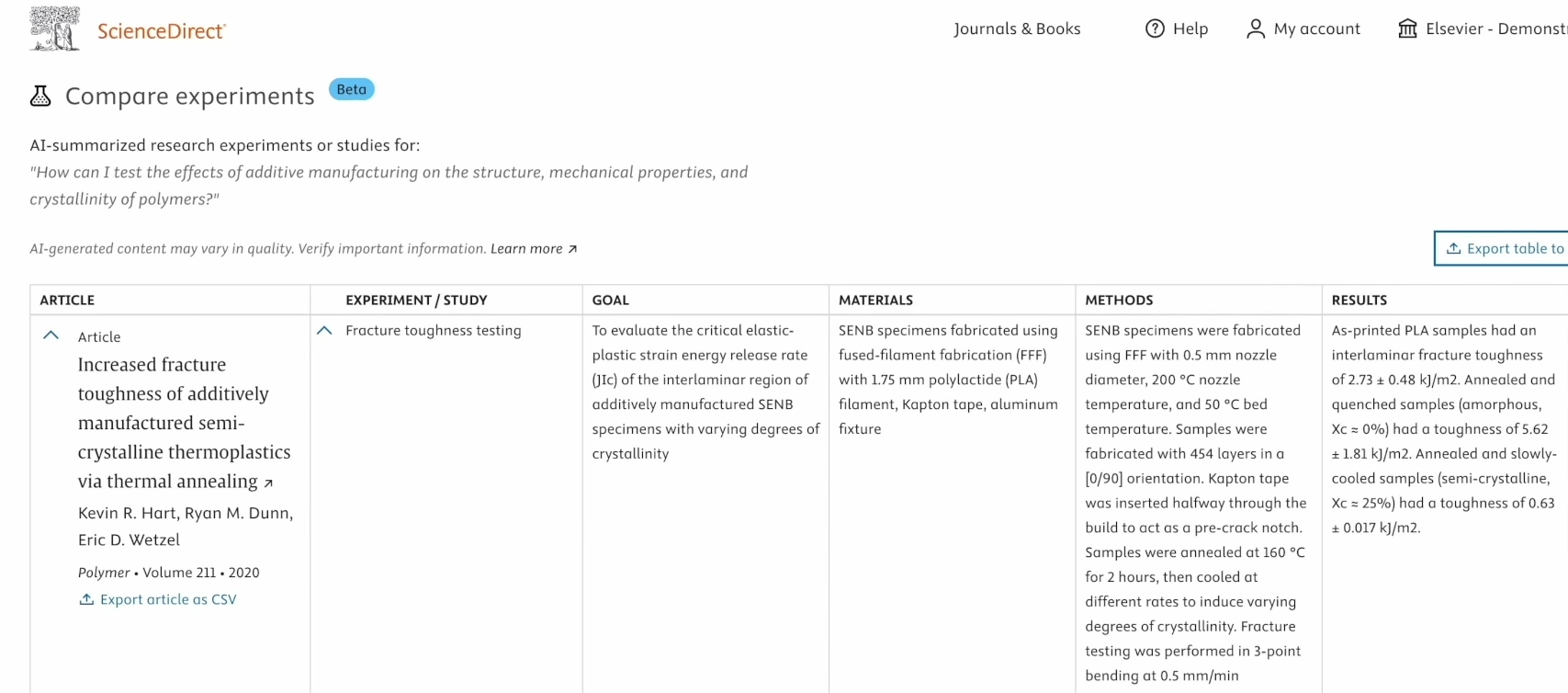
Together, Scopus AI and ScienceDirect AI represent Elsevier’s two-pronged approach: one focused on abstract-level synthesis and discovery (Scopus AI), the other on deep reading and experimental comparison (ScienceDirect AI). Both tools are designed to streamline the research workflow and reduce scholars' time searching, summarising, and contextualising literature.
Springer Nature: Curie – AI-Powered Scientific Writing Assistant
Springer Nature has taken a dual approach to integrating AI into scholarly communication. At the heart of its offering is Curie, a generative AI assistant designed to support researchers in writing and editing scientific manuscripts. Launched in October 2023, Curie is tailored especially for non-native English speakers, drawing on a training corpus of academic literature across 447 disciplines and informed by over 1 million editorial corrections from real-world submissions. It assists with language editing, clarity, tone, and formal expression, helping researchers elevate the quality of their writing before submission.
Curie is accessible as a free language editing service, where researchers can upload a manuscript and receive an AI-enhanced edited version by email—focusing on grammar, phrasing, and academic writing style to improve clarity and professionalism.
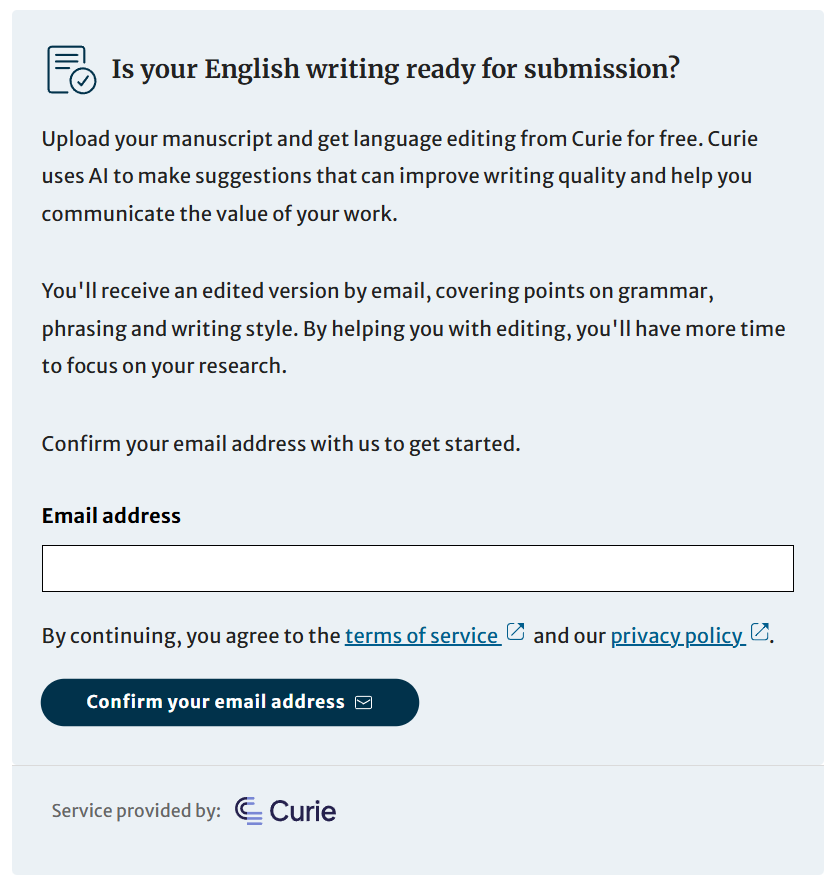
Curie is also available as an integrated add-in for Microsoft Word, allowing researchers to revise, translate, and refine their manuscripts directly within their writing environment—streamlining the editing process without disrupting their workflow.

Wiley: Partnering with AI Platforms to Expand Research Discovery
Unlike publishers building their own standalone generative AI tools, Wiley’s strategy centres on integration and exploration. Rather than developing an in-house assistant, Wiley has opted to collaborate with external AI platforms to improve research discoverability and understand how researchers are using AI across disciplines.
Perplexity Integration
In 2024, Wiley partnered with the AI-powered search engine Perplexity, integrating Wiley’s academic content into Perplexity’s Enterprise Pro platform. This allows verified answers to be generated from Wiley’s peer-reviewed material in areas like nursing, business, and engineering, making accurate academic insights more accessible via conversational search.
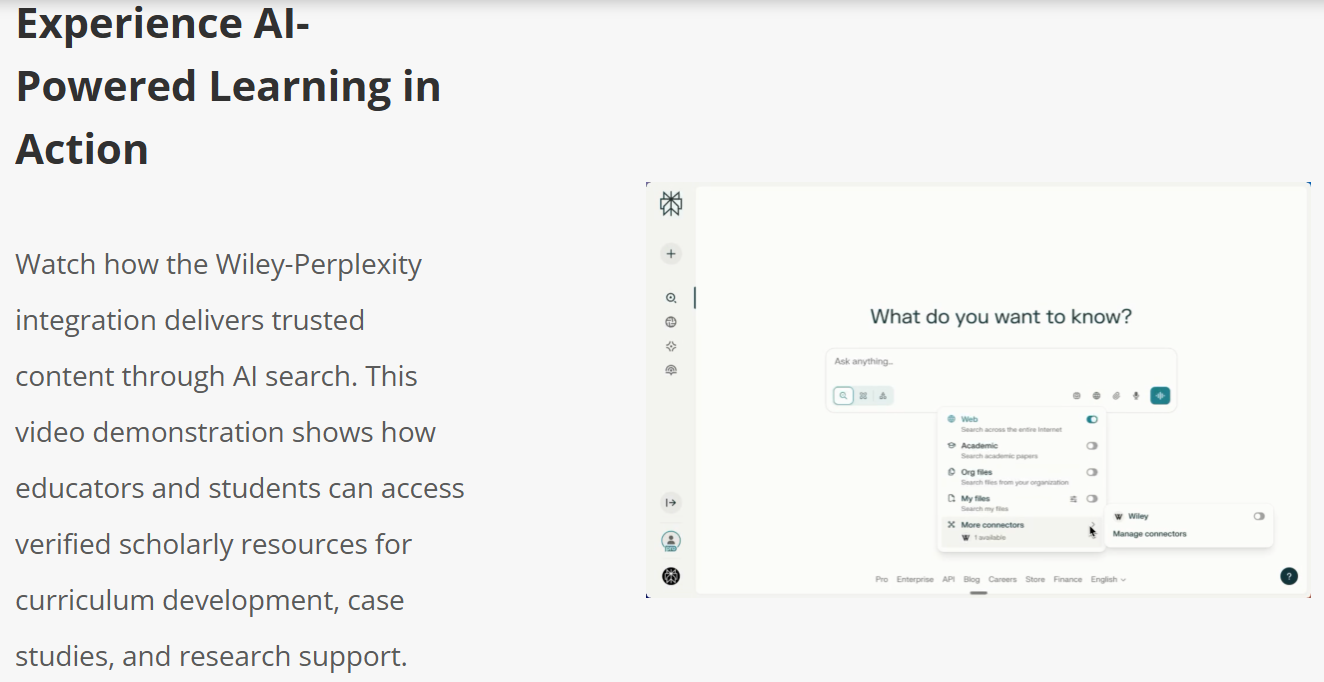
ExplanAItions: Understanding AI Use in Research
Wiley has also launched ExplanAItions, a large-scale study into how AI is transforming academic work. The study examined 43 distinct AI applications in research workflows, from literature review to data analysis, offering insights into current usage patterns and future needs. While not a tool itself, this initiative reflects Wiley’s focus on understanding and supporting researchers' evolving AI needs, rather than rushing to deploy new technologies.
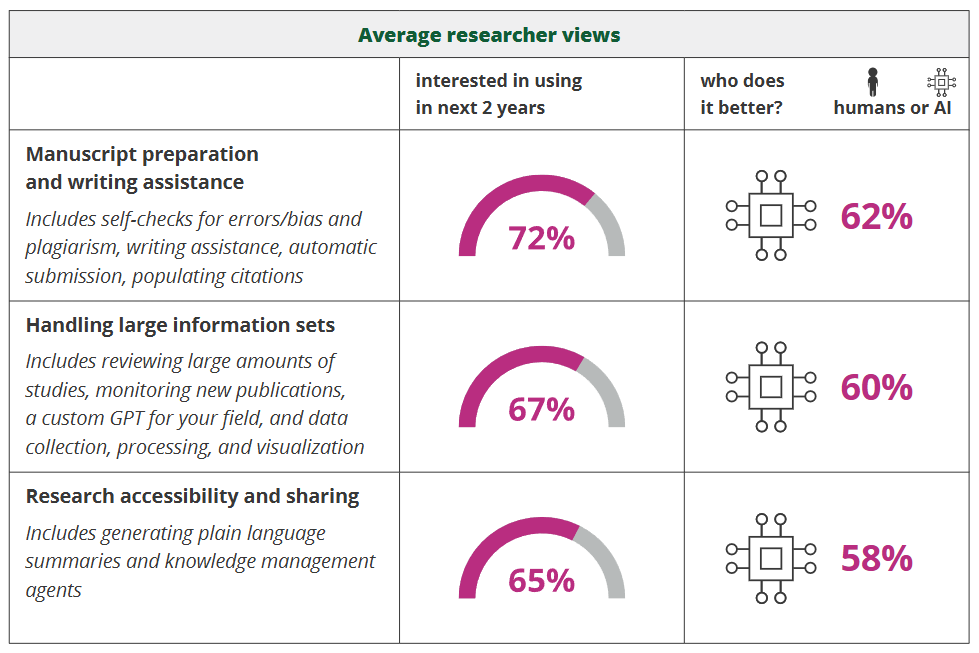
Recommendations
Researchers seeking to integrate generative AI into their workflows now have several options directly from major academic publishers. Elsevier offers two complementary tools: Scopus AI is ideal for topic discovery, summarisation, and exploratory reading, while ScienceDirect AI enables detailed full-text analysis and experimental comparison. Springer Nature’s Curie focuses on improving academic writing, particularly useful for non-native English speakers, and is available both as a free service and a Word add-in. Wiley, meanwhile, supports discovery through platform partnerships and contributes to shaping AI’s academic role via its ExplanAItions study. The choice of tool should reflect the researcher’s stage in the workflow—whether discovering, reading, writing, or planning.
The authors used GPT-4o [OpenAI (2025), GPT-4o (accessed on 26 May 2025), Large language model (LLM), available at: https://openai.com] to generate the output.






